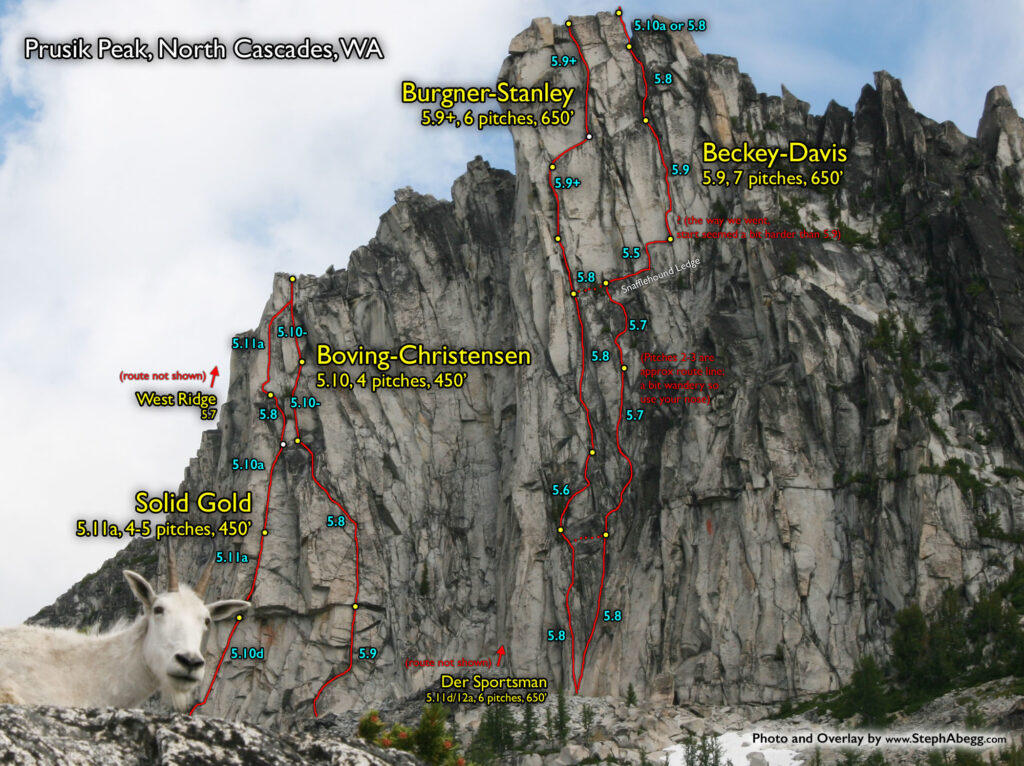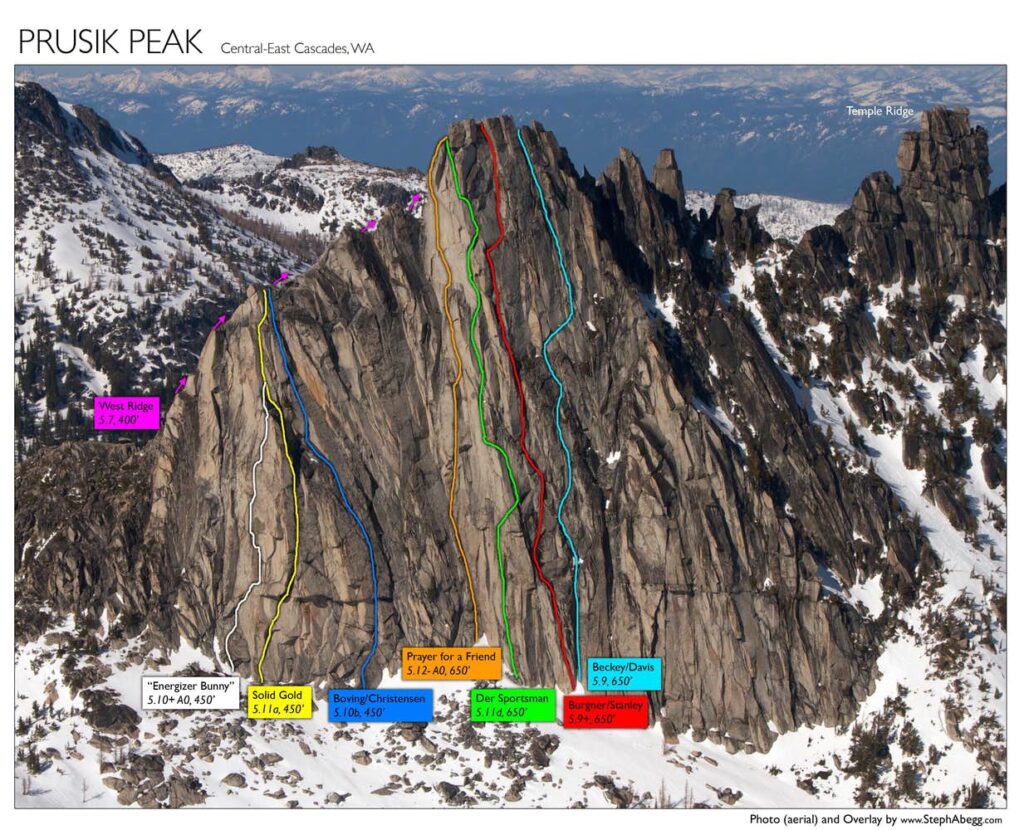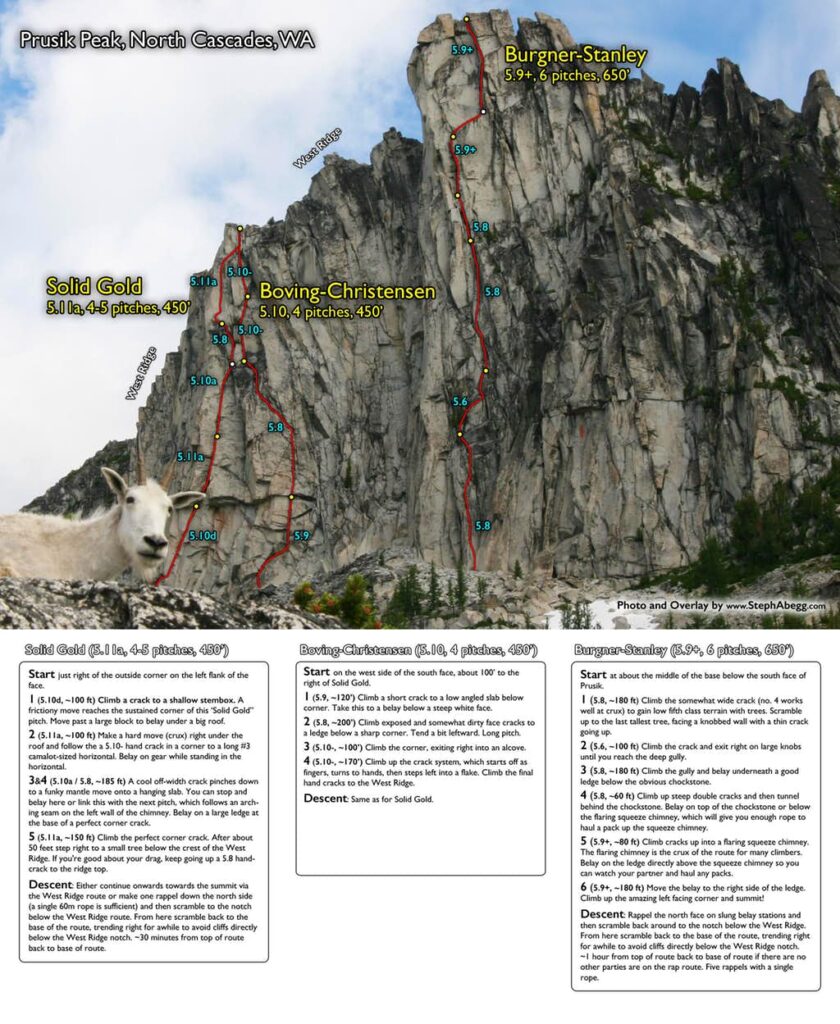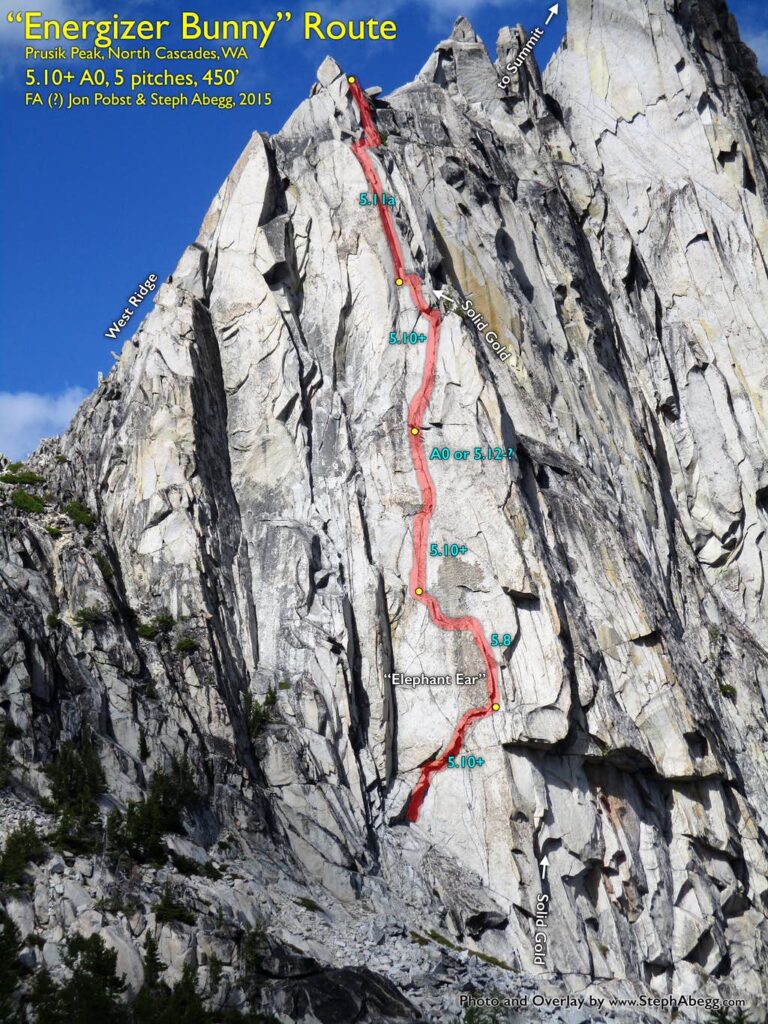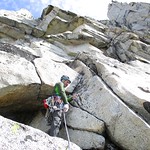Several years ago, Jon had spotted a continuous link-up of cracks on the the west-facing face just left of Solid Gold. So on Sunday evening, after our partners Brandon and James had left to hike out to get to their jobs Monday morning, Jon and I went over to check out these cracks. I don't think either one of us really had any expectations of what was going to happen. Would we actually start climbing up, or would we just look and ponder? On one hand, it seemed pretty far-fetched that we could knock out an entirely unknown 5 pitch route in the 4 hours of daylight we had left, especially after we had both already climbed all day. On the other hand, neither one of us really wanted to think about how much gear we would need to leave and what kind of shenanigans we would need to do in order to bail if the cracks were not climbable or if darkness set in. So we left all of these thoughts undiscussed and just kind of started climbing. 4 hours later we were on the West Ridge.
It's quite possible this route (or portions of this route) was climbed at one point by one of the Prusik FA-ers of the 70's and 80's such as Rich Romano, Fred Yackulic, Dan Nordstrom, Paul Boving, or Matt Christensen*. But a
search of the AAJ does not yield any descriptions that describe our route, and there were no signs that the cracks had been climbed (no pitons, rock scars, slings, etc). Perhaps the daunting first pitch has been enough to keep climbers off the route; indeed, the first pitch would have been nearly impossible to protect without cams (particularly the #4, #3, and #2 sizes). So perhaps it is a new line or at the very least been climbed once or twice and been undocumented. Either way, the thrill of the unknown was there and that's what counts. We decided to call our route "Energizer Bunny": named for the bunny-ear-like appearance of the cracks at the end of the 4th pitch where the route exits the west face and joins Solid Gold and the fact that we climbed the route late in the day after a full day of climbing. The route actually features some excellent climbing. The first pitch is a bit burly and dirty, but the cracks above are cleaner and there are some really excellent splitter sections. It was all freeable at the 5.8-5.10+ level except for a 15-ft section of perhaps 5.11+/5.12- terrain where we pulled on gear. What an adventure!
*Update: Shortly after I posted this TR, Matt Christensen emailed me and confirmed that he had never climbed our line; moreover, he was not aware of any ascents previous to ours.

